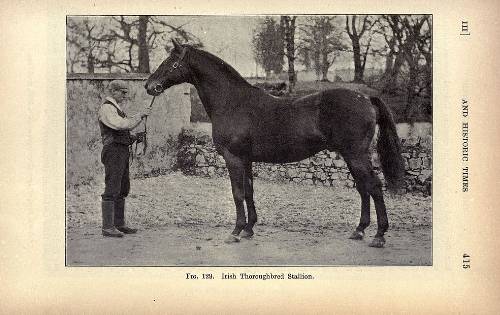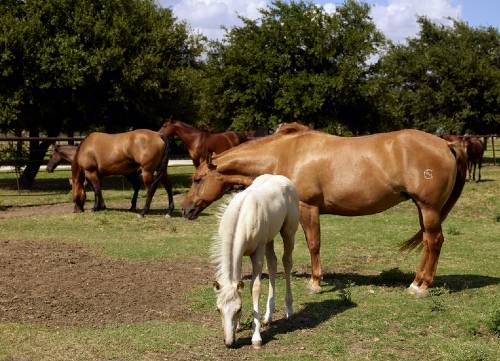Affiliate Disclaimer
As an Amazon Associate I earn from qualifying purchases. It helps me keep the website going. Thank you for your support.
If you are interested in different breeds of horses, you will probably have come across the term ‘stud book’. A particular type or breed of horse is sometimes referred to as being ‘registered’ in a stud book. But what is a stud book for horses?
A stud book is a registry or an official record of individual horses. Often the classification is based on the horse’s breed. Some stud books only register purebred horses with a known lineage, these are closed studbooks. Other stud books will accept horses from different breeds, provided they meet other criteria such as conformation and ability.

The term stud book is a little confusing because they don’t just contain studs! Before we go on to look at the different types of stud books for horses, let’s take a quick look at the word stud…
What is a Stud Horse?
There are various names for male horses. The word ‘stud’ refers to uncastrated male horses (stallions) that are used for breeding.
However, the term stud is used in different ways. For example, a stud farm is where horses are kept specifically for the purposes of breeding. And stallions are said to be standing at stud when they are available in a stud farm to be used for breeding purposes.
Breeders will pay what’s known as a stud fee, to use a particular stallion to breed with one of their mares. Incidentally, female horses used for breeding are also sometimes called stud mares.
Although female horses are sometimes called stud mares, usually the term stud is taken to mean a breeding male horse. Nevertheless, stud books are a registry of both female and male horses.
How to Register a Horse with a Stud Book
Horses are not the only animals with stud books. Many other animals also have stud books, from dogs to alligators (source).
Zoological organizations use stud books to manage and preserve populations of wild animals. By contrast, a stud book for horses is used to preserve, protect, and sometimes refine the characteristics of a particular breed or type of horse.
There are also lots of different stud books for horses. Different countries have their own stud books, and within countries, there will be different registries for different breeds or types of horses.
Each of these particular stud books will have its own criteria for selection. And they will have their own procedures for allowing applicants to register.
If you would like to register your horse in a particular stud book, the best thing to do is check out their website, or give them a call. Invariably stud books will have a section on their website that will outline the requirements for registration.
Having said that, stud books can be broadly categorized as being either open or closed. Understanding the difference between an open and closed stud book is helpful if you are hoping to register your horse. So, let’s take a look at the difference between these two books now…
What is a Closed Stud Book for Horses?
A closed stud book is a registry made up of horses that all descend from a specific bloodline. The registry will not allow applicants that are not purebred, and that do not descend from the original foundation stock.
Stud books for horses, in particular, horseracing have been used since the early 17th century. However, the entries into very early stud books were not systematic or reliable. This changed, in 1791, when James Weatherby published the first volume of what is known as The General Stud Book. This is a register of all purebred thoroughbred racehorses bred in Britain.
It’s thought that all thoroughbreds in The General Studbook descend from three Stallions imported into the UK between 1690 and 1730, and 43 mares that were imported by Charles II (source).

Other horse stud books around the world, date back to the 19th century. For example, The Stud Book Français was first published in France in 1838. And in 1897, The American Stud Book was introduced.
The American studbook is a registry for thoroughbreds foaled in the United States, Puerto Rico, and Canada. And also, for thoroughbreds imported from countries that have a stud book that has been approved by The Jockey club.
Entry into a closed studbook requires that the horse’s lineage is verifiable, through paperwork and sometimes a genetic typing kit. In addition to this, the horses may be required to meet certain conformation standards. They might also be expected to demonstrate a particular standard of performance too.
This may involve the owner of the horse presenting their horse to an official. The official will make an overall assessment of the horse, and watch a horse being put through different places to see how they move.
Pros and Cons of a Closed Stud Book for Horses
One of the advantages of a closed registry for horses is that it protects and promotes the purity of a breed.
However, a criticism that is often leveled at closed stud books is that they limit the gene pool from which foals are born. As a result, it’s harder to improve the breed with desirable attributes from other bloodlines.
It also means that problematic features, either physical, behavioral, or temperamental may become more predominant. This can partially be avoided if horses that are known to be affected by a condition are not bred (source).
But, some genes are recessive and undesirable attributes can be exacerbated in a breed, even with careful breeding practice.
Also, with a closed stud book, problematic features, aren’t diluted by the introduction of horses with different genetic makeup.
Interestingly, closed stud book registries can be used by researchers looking into the heritability of certain traits in horses. In one study by Munoz, the Chilean Horse stud book was used to look into whether crib biting had a genetic component.
It was found, that although crib biting was strongly influenced by environmental factors, some horse breeds, including the Chilean horse are more vulnerable to developing the habit under stressful circumstances (source).
What is an Open Stud Book for Horses?
An open stud book is a register that will accept horses that are not purebred. Open stud books include crossbred horses and horses whose parents are not themselves on the register.
One example of an open studbook is the Anglo-European Studbook (AES). Rather than focusing on the purity of a horse’s bloodline, the aim of the AES is to support the breeding of healthy sport horses.
In order to register a foal with the AES, the applicant needs to provide evidence of the foal’s lineage. For example, if the foal’s parents (dam and sire) are not registered with the AES, the applicant needs to provide a copy of the parent’s pedigree and registration papers.
In addition to that, the horses are evaluated. Some of the things that are included in the valuation are the horse’s limbs, conformation, correctness in walk, trot and canter, and if appropriate they’re jumping ability.
During the assessment, they will be scored on various physical criteria. However, the horse’s temperament and character are also taken into consideration.
As such, the focus of a stud book like the AES it’s on the horse’s functionality, performance, and temperament, rather than on the purity of the breed.
While some open stud books are quite inclusive and will except horses from a range of great, others are considered to be semi-open. An example of this is the American Quarter Horse Association (AQHA).
The AQHA is largely closed. However, it does have an Appendix registry for foals that are the offspring of registered quarter horses crossed with thoroughbreds.

Pros and Cons of an Open Stud Book for Horses
An obvious advantage of an open studbook is that the gene pool is opened up. In addition to this, the emphasis on open registries often has to do with horse performance. This encourages the breeding of horses for their ability and well-being rather than their genetic purity.
Regulation around setting up a stud book varies from country to country. The World Breeding Federation for Sport Horses (WBFSH), has published guidelines on creating a Sport Horse Stud Book.
So, there are some controls in place over who and how the horse stud book comes into existence. However, one of the concerns that is sometimes leveled at open studbooks, is that they can be set up to promote attributes that are not true breeding characteristics (source).
One example of this are registries that are set up to promote horses of a particular color. It’s sometimes suspected that spurious stud books are created so that registered horses can command higher prices when sold.
The purpose of a stud book of this kind would be to promote the financial gain of the breeders, rather than the well-being of the registered horses.
Final Thoughts
Each stud book for horses will have different goals depending on whether they are open or closed. It also depends on the type or breed of horse but they are designed to include.
Some stud books focus on the purity of a horse breed, and others focus on the horse’s ability and sporting performance. Many stud books will focus on a balanced approach to both.




